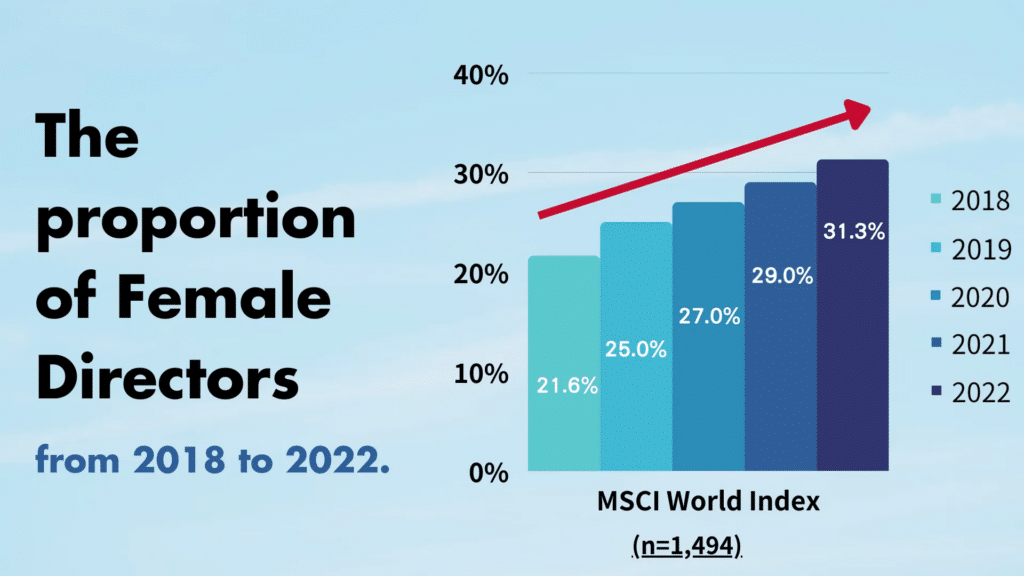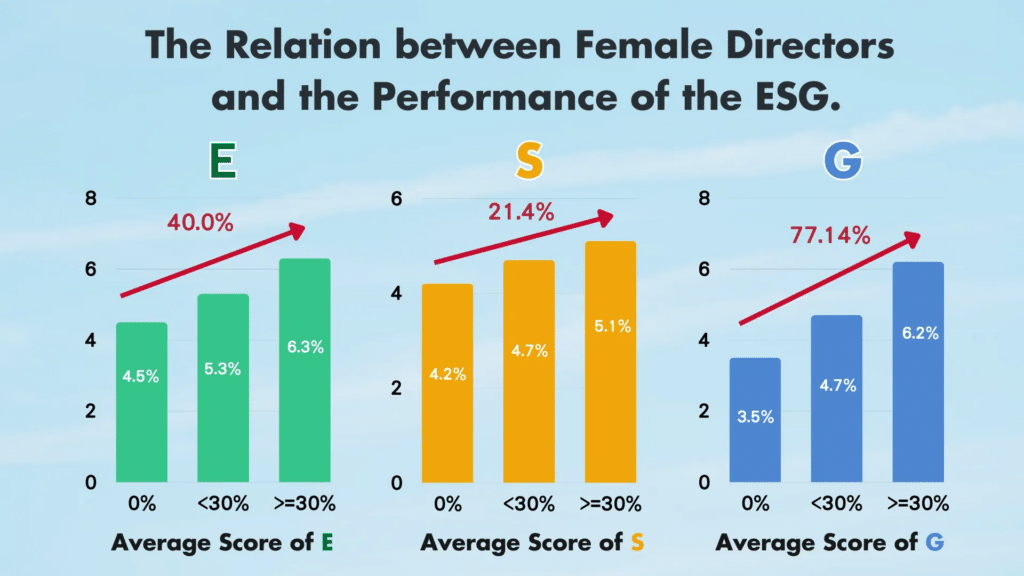
Table of Contents
The current trend emphasizes gender equality, and the role of women in the corporate world is increasingly important. This article will explore the changes in the global proportion of female directors, the enactment and implementation of laws in various countries, and the impact of female directors on corporate performance. Through this research, we aim to raise awareness and attention to women in the corporate field, promote more outstanding women to step onto the stage of corporate decision-making and bring more value to enterprises.

According to the latest statistics from the MSCI World Index, the proportion of women on boards of directors globally has steadily increased by 45% in the past five years. As of 2022, the global proportion of women in the boardroom has reached a historic high of 31.3%, indicating that society is increasingly valuing the role of women in the boardroom amidst a global movement towards gender equality awareness and legislation.

The “Women on Boards Progress in 2022” report released by MSCI shows that France has the highest proportion of women on boards of directors, reaching 46.1%. The report also indicates that the proportion of women on board directors in Europe is the highest, with most European countries exceeding the global average. However, the situation in Asia is far below the global average, indicating that Asian businesses still have a long way to go in promoting gender diversity and equality. Nevertheless, it is worth noting that South Korea has seen a sharp increase in the past five years, growing by as much as four times.
Many countries have enacted laws and regulations requiring listed companies to meet certain quotas for female board members to promote gender equality and diversity in the workplace. The following are examples of some countries’ regulations and implementation regarding the proportion of female board members.
In 2003, a law was passed requiring all listed companies to have a female board member proportion of at least 40% by 2008.
In 2011, a law was passed requiring all listed companies to have a female board member proportion of at least 40% by 2017.
In 2015, a law was passed requiring all listed companies to have a female board member proportion of at least 30% by 2016.
In 2018, a law was passed requiring all listed companies to have a female board member proportion of at least 30% by 2019.
In early June 2022, an important agreement was passed, requiring EU-listed companies to achieve a target of 33% female board members by June 2026.
In March 2023, the Financial Supervisory Commission (FSC) released the “Corporate Governance 4.0 — Sustainable Development Action Plan”, which requires listed and OTC companies to have a female board member proportion of at least one-third by 2025. If the standard is not met, the reasons must be disclosed in the annual report.
According to a study by The Academy of Management Journal, a positive correlation exists between the proportion of female directors and market performance in countries with relatively equal gender representation. Conversely, in countries with greater gender inequality, the proportion of female directors is negatively correlated with market performance. The study also found a positive correlation between female board representation and the two main responsibilities of corporate governance and strategic participation.
According to a report by MSCI, companies with higher proportions of female directors demonstrate better performance across the three ESG (Environmental, Social, and Governance) dimensions. These data indicate a positive impact of increasing female board representation. Specifically, comparing situations with “No female director” versus “Female directors account for more than 30% of the board”, female directors have the best effect on the “G” dimension, which increased by 77.14%, followed by the “E” dimension, which increased by 40%; and finally, the “S” dimension, which increased by 21.4%.

Promoting gender diversity and equality is a moral responsibility and a critical factor for sustainable corporate development. Adding female directors can positively affect the company, enhance diversity in strategic decision-making and regulatory performance, most importantly, enhance ESG scores.
However, there is room for improvement in the proportion of female directors in Taiwanese companies. In the following article, we will share women’s performance in the case of Taiwan companies and further analyze their impact.
About us
⭐️ TEJ Website
⭐️ LinkedIn
✉️ E-mail: tejservice@tej.com.tw
☎️ Phone: +886-2-87681088